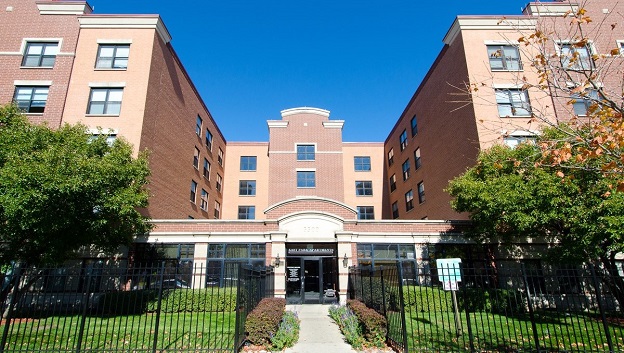
CHICAGO—By most metrics, the US economy is doing very well, and across many sectors, the commercial real estate industry has profited. Construction starts are up, vacancy rates are headed down, and rental rates are on a steady march upward. At NAIOP's CRE.Converge 2017 conference, held in Chicago last week, more than 1,500 participants heard about these hopeful trends, and how their businesses could benefit. But just as certain regions and metro areas still struggle to take part in the economic boom, portions of the real estate industry are perhaps not receiving the attention they should, and NAIOP also wanted to shine a light on these problems.
One of the most vibrant sectors in real estate has been multifamily, but after running the numbers, many developers have understandably opted to concentrate on luxury rentals in strong urban cores. Unfortunately, few have decided to build affordable housing, and subsequent shortages may strain many housing markets.
Jay Lybik, vice president, research services, Marcus & Millichap, led a discussion on the issue with three experts: Sheila Byrne, executive vice president, The Habitat Company LLC; Jim Grauley, president, chief operating officer and principal, Columbia Residential; and Jay Parsons, vice president, RealPage.
“There are three areas of concern,” said Byrne. Senior citizens, those needing what is commonly called workforce housing, and new graduates just starting their careers, are all struggling to find affordable places to rent.
Habitat may have a unique perspective on these problems. The Chicago-based firm owns, develops, and manages thousands of apartments across the income spectrum, from public housing units to luxury homes.
The need for new housing for seniors will just keep increasing, according to Byrne. The US population is aging, and more advanced medical care means people are living longer than ever. As a result, there has been a boom in new construction for seniors, but much of it is for higher-income residents.
That sector may have reached a saturation point. “The occupancy rate at higher-end facilities has been declining,” Byrne said.
She added that no easy solution exists. “It doesn't look like Congress wants to increase funding. And the waiting lists for public housing units are already very, very long, so that's not an option for seniors.”
Furthermore, much of the funding for affordable housing is directed toward people in the lowest income categories. That leaves out those needing affordable workforce housing, who typically earn between 60% and 100% of the area median income.

And not having enough housing for this group, especially near centers of employment, could have serious economic impact, as it means many won't have easy access to their jobs. Byrne made sure to point out that this was a national problem, not one confined to Chicago. Portland, Orange County and Riverside, are considered among the least affordable places, and St. Louis, Dallas and Houston were among the most affordable.
“There are neighborhoods that could really use an affordable component,” she said, and Chicago is trying to come up with a solution. The city has an ordinance that requires some units to be set aside for affordable housing, but developers can opt out by paying a certain amount into an affordable housing fund. However, Mayor Rahm Emanuel's administration has proposed canceling the opt out provision for developers in two hot neighborhoods, and requiring either a 15% affordable housing component within their projects or the creation of new units nearby. One area would be six square miles that stretches from the Near North Side to the Near West Side, and the other would be nine square miles along the Milwaukee Ave. Corridor.
As reported in GlobeSt.com, some firms have found that owning and operating workforce housing can be a great business. But typically, these firms are engaged in the renovation of existing units, many built in the 70s and 80s, and not the construction of new units.
And under current conditions, that will be difficult to change. Construction costs have soared along with the economy, making it difficult to finance new affordable units. Many cities have joined Chicago in experimenting with a mix of incentives and tax breaks to help make the numbers work for more affordable projects. “It will be interesting to see how all this plays out,” said Byrne. “But it's not really enticing developers right now.”
Want to continue reading?
Become a Free ALM Digital Reader.
Once you are an ALM Digital Member, you’ll receive:
- Breaking commercial real estate news and analysis, on-site and via our newsletters and custom alerts
- Educational webcasts, white papers, and ebooks from industry thought leaders
- Critical coverage of the property casualty insurance and financial advisory markets on our other ALM sites, PropertyCasualty360 and ThinkAdvisor
Already have an account? Sign In Now
*May exclude premium content© 2025 ALM Global, LLC, All Rights Reserved. Request academic re-use from www.copyright.com. All other uses, submit a request to [email protected]. For more information visit Asset & Logo Licensing.








